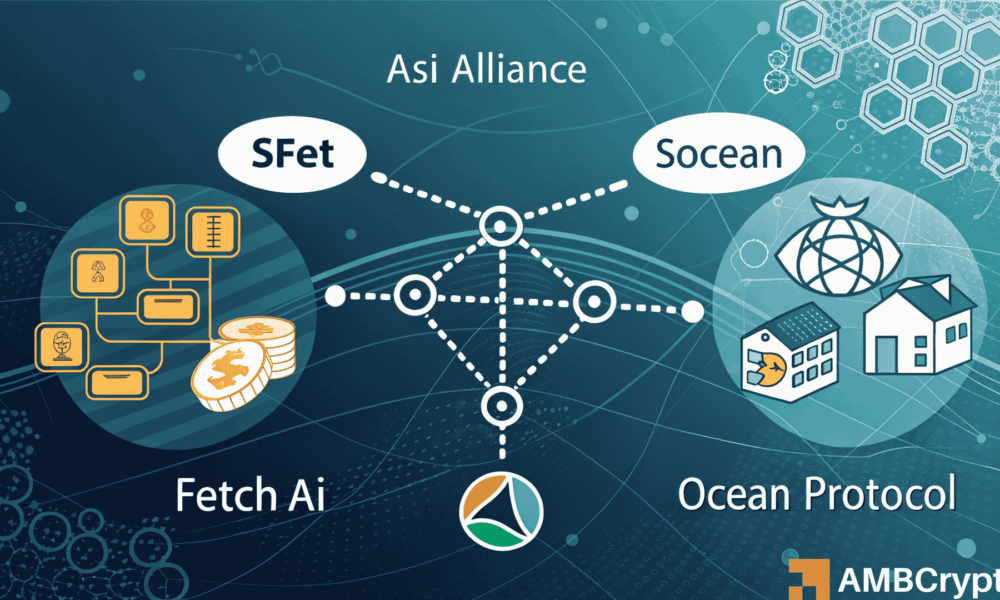Turbulence in the ASI Alliance: Ocean Protocol’s Controversial Token Transitions
Introduction
In the rapidly evolving world of cryptocurrency, the recent actions taken by Ocean Protocol have sent shockwaves throughout the Artificial Superintelligence (ASI) alliance, sparking heated debates over transparency and ethical conduct. Ocean Protocol’s decision to convert 661 million $OCEAN into $FET tokens, which were later distributed across various exchanges, has raised eyebrows and ignited controversy. Fetch.AI CEO Humayun Sheikh publicly accused Ocean of potential misconduct, branding the situation as nearing a “rug pull” scenario typically seen in less reputable projects. This article delves into the unfolding events, the implications for the ASI alliance, and the market reaction to these significant developments.
Breakdown of Ocean Protocol’s Actions
On July 1, data from the on-chain analytics firm Bubblemaps revealed that a multisig wallet associated with Ocean Protocol converted a staggering 661 million $OCEAN tokens into 286 million $FET tokens, valued at around $191 million at the time. Subsequent transactions from this wallet involved splitting 196 million $FET across 30 new addresses. Between late August and mid-October, most of these tokens found their way to prominent trading platforms like Binance and GSR Markets via over-the-counter (OTC) markets. Notably, it is estimated that 270 million $FET, or approximately $120 million, reached centralized exchanges, a pattern often indicative of liquidation events, raising suspicions among investors.
Internal Fractures in the ASI Alliance
The ASI alliance, which formed in early 2024 when Ocean Protocol, Fetch.AI, and SingularityNET combined their resources under a unified $FET framework, is now facing significant internal strife. Initially, this merger aimed to create a stronger collaborative front to advance decentralized AI projects. However, emerging tensions began to surface when Ocean Protocol announced its decision to withdraw from the alliance on October 9, allowing $OCEAN to be “de-pegged” and relisted on exchanges. This announcement coincided with Ocean’s retention of 51% of its $OCEAN supply, originally designated for community incentives and data farming. The lack of transparency regarding the token transfers has left investors and partner projects spotlighting potential misconduct.
Accusations of Misconduct and Responses
In the wake of these developments, Fetch.AI’s CEO, Humayun Sheikh, did not hold back in expressing his concerns. He openly accused Ocean Protocol of selling community tokens, escalating his remarks by categorizing the scenario akin to a “rug pull” disaster that would typically occur in less legitimate projects. Conversely, Bruce Pon, co-founder of Ocean Protocol, firmly dismissed these claims as “unfounded and baseless rumors.” Pon stated that they would prepare a formal response and suggested that legal proceedings could be on the horizon. Notably, Bubblemaps clarified that while they cannot confirm the nature of the transfers, the activities are usually consistent with liquidation actions.
Market Reactions to the Alliance Fallout
Market sentiment has understandably shifted in response to the developments within the ASI alliance. Fetch.AI’s $FET token suffered a steep decline, plunging over 52% from $0.55 to approximately $0.27 between October 9 and 21, as reported by TradingView data. On the other hand, Ocean Protocol’s $OCEAN saw a rebound during the same timeframe, rising from $0.25 to $0.30. This divergence in market performance suggests a potential shift in investor sentiment, with some viewing Ocean’s newfound independence and the upcoming relisting as a stabilizing move amid the uncertainty surrounding Fetch.AI.
The Road Ahead: Transparency and Accountability
As both Ocean Protocol and Fetch.AI navigate the ongoing legal and governance processes, the pressure is mounting for both teams to ensure full transparency regarding their token allocations and on-chain activities. The ASI alliance, once celebrated as a pioneering effort in decentralized AI collaborations, now stands as a crucial case study for how partnerships in the Web3 space can handle trust, treasury management, and public accountability. For the future, both organizations will need to work diligently to rebuild faith with investors and stakeholders, aiming to restore credibility in a landscape fraught with skepticism.
Conclusion
The current discord within the ASI alliance exemplifies the challenges at the intersection of blockchain technology and collective governance. As Ocean Protocol and Fetch.AI confront the consequences of their recent actions, the community watches closely to see how these tensions resolve. The crypto sphere thrives on trust, and the actions taken by these leaders may serve to either reinforce or undermine confidence in the broader decentralized ecosystem. Adjusting to the complexities of transparency, liquidity, and ethical principles will be essential for preserving the integrity of the alliances that are emerging in this space.


